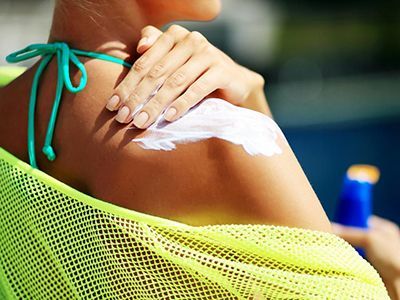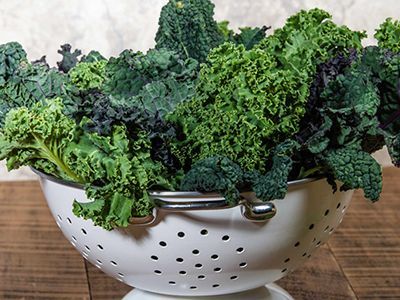Five Best Practices for Safe & Natural Sun Protection
With summer in full swing, the warm weather often means spending more time outside with family and friends. Now is as good a time as ever to learn more about sun safety so we can fully enjoy being outdoors in ways that promote skin and overall health. In this Mederi Healthy Living blog we focus on sun-protective habits that can help you reduce the likelihood of sunburn, skin aging, and UV-induced skin cancers. We'll cover how natural sunscreen works, simple habits to protect your skin, and botanicals that support healthy skin aging.

Should I use sunscreen?
The purpose of sunscreen is to shield the skin from ultraviolet (UV) rays and their potential harmful effects, including sunburn, skin cancer, and accelerated skin aging. When shopping for sunscreen, there are some important considerations to keep in mind. SPF ratings measure for UVB radiation protection only, so it’s important to look for a sunscreen that includes a broad spectrum of protection against both UVB and UVA rays. The Environmental Working Group (EWG) suggests that SPF values between 30 and 50 offer appropriate protection. Physical and chemical sunscreens are the two main types of sunscreen available.
Natural vs. Chemical Sunscreen
Natural sunscreen, is mineral-based and works primarily by scattering and reflecting UV radiation. Active ingredients (ingredients that provide UV protection) include zinc oxide and titanium dioxide. Zinc oxide protects against UVA1 rays and titanium dioxide protects against both UVA2 and UVB rays. These ingredients provide sun protection and don’t pose any major risks to health. Natural sunscreen may also contain protective secondary ingredients, including antioxidants, osmolytes (molecules that maintain hydration and the integrity of cells in stressful conditions), and DNA repair enzymes that protect the skin from damage. Examples of antioxidant ingredients in sunscreen include vitamin E, vitamin C, silymarin, and green tea polyphenols.

A few of our favorite natural sunscreens include:
- Ke Ko Organics Ko’a Sun Cream, Tinted, SPF 31
- Badger Sunscreen Cream, Unscented, SPF 30
- Earth Mama Tinted Mineral Sunscreen Lotion, SPF 25 & 40
- Maui Surfer Honey All Natural Sunscreen Lotion SPF 30 Reef Safe
Chemical sunscreen, sometimes referred to as organic-based sunscreen, absorbs the sun’s UV rays and converts them into heat. The chemical structure of the sunscreen ingredients allow for high energy UV rays to be absorbed, and reduce the degree to which they can penetrate the skin.
The EWG has identified a number of active ingredients commonly included in chemical sunscreens that can pose a risk to health, including:
- Avobenzone
- Homosalate
- Octinoxate
- Octisalate
- Octocrylene
- Oxybenzone
Chemical sunscreen ingredients can cause allergic reactions, penetrate the skin, and act as endocrine disruptors in the body. Endocrine disruptors are chemicals that mimic the effects of hormones in the body, prevent hormones from binding to receptors, and are linked to reproductive, neurological, developmental, immune-system, and other problems.
Not only are there numerous problems associated with chemical sunscreens, as listed above, studies also show that sunscreens can actually increase your risk of skin cancer. To find out why, read Donnie's blog, "The Dangers of Commercial Sunscreens".

A note about spray sunscreens: EWG recommends avoiding all spray sunscreens. Not only are they very difficult to apply effectively and evenly, there’s some concern the ingredients could potentially cause irreversible lung damage.
Is it reef safe? Sunscreens made without oxybenzone, octinoxate, or any chemicals shown to harm coral or humans are reef safe. Zinc oxide and titanium dioxide are mineral-based, less harmful to corals, and are not linked to coral bleaching. In addition, in order for mineral sunblocks to leave corals untouched, they must be “non-nano”, meaning the ingredient particles must be above 100 nanometers in size so that they cannot be ingested by corals. Read the label and product info to be sure.
Five Best Practices for Sun Protection
Sunscreen alone is not sufficient to protect against skin cancer and skin damage. Follow these practices to help offer the best sun protection:
- Enjoy shaded areas.
- Spend less time in the sun during peak hours (10 am to 4 pm).
- Wear a hat with a large brim.
- Cover up with sun protective clothing (long sleeved shirts and pants).
- Wear sunglasses with UV protection.
- Build up a tan with slow and steady exposure to sun for the best protection.

How Much Sun Exposure Should I Get?
Slow and steady exposure to sun, building up a tan is the best protection. Too much induces oxidative damage while just the right amount activates an adaptive response. Sunlight in the right dose actually makes your cells stronger and helps them protect themselves from cancer. An appropriate dose of sunlight also drives your cells to produce more vitamin D, which affects more than 1,000 reactions across your whole body, including testosterone production, antioxidant production, and more.
This type of process, characterized by a low-dose response that is opposite in effect to that seen at high doses, is referred to as hormesis. Hormesis in aging is represented by mild stress-induced stimulation of protective mechanisms in cells and organisms resulting in biologically beneficial effects. Sun exposure triggers hormesis. UV rays cause sunburn, cancer, and all kinds of damage if you get too many of them, but when you get the right dose, sun exposure is an incredibly powerful (and free) health promoter. The amount of sunlight we each need depends on how much melanin you have in your skin.

Botanical Support for Healthy Skin
With botanical medicine as one of our primary modalities, we recommend topical application of specific herbs for both pre-and-post sun exposure. These herbs contain potent compounds that protect against cancer, chronic disease, and reduce the effects of aging. Some of our favorite botanicals include green tea, milk thistle, and turmeric, all of which help to fight free-radical damage. Look for these herbs in your natural skin care products.
Along with nourishing your skin with topical antioxidants, it’s important to consume a diet rich in antioxidants and phytonutrients. Include an abundance of fresh vegetables (particularly dark leafy greens and deep yellow/orange vegetables), fruits (especially berries), cold-water fish, extra virgin olive oil, and green tea. These foods will increase antioxidant levels, providing natural protection against sun-induced UV damage.
Join the Mederi Center community by signing up for our email list! We send several emails a month with product promotions for patients, practical tips for healthy living, blogs written by our practitioners, information about events, and other news. You can unsubscribe at any time.


